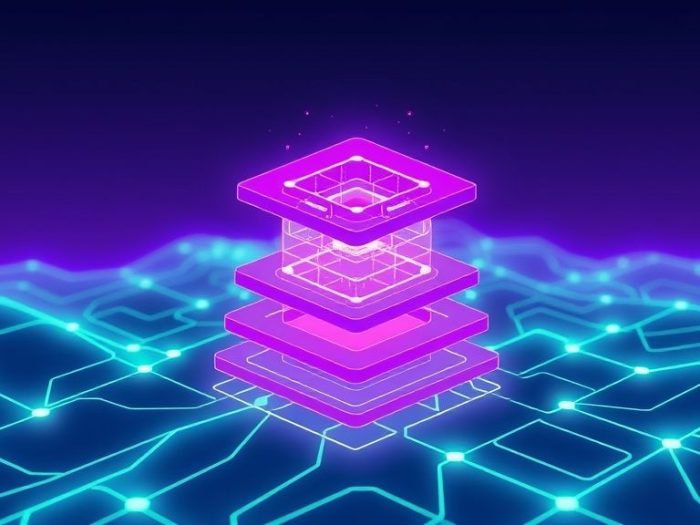Blockchain technology has the potential to revolutionize various industries, but scalability remains a significant challenge. Layer 2 solutions are designed to address this by increasing transaction throughput and reducing fees on existing blockchains. This article will explore Layer 2 cryptocurrencies, examining their role in enhancing blockchain scalability, different types of Layer 2 solutions, and their potential impact on the future of blockchain technology.
Understanding Blockchain Scalability
Blockchain scalability refers to the ability of a blockchain network to handle a large number of transactions efficiently and cost-effectively. Many early blockchains, like Bitcoin, have limitations in terms of transaction speed and throughput.
Scalability Challenges:
-
Transaction Throughput: The number of transactions a blockchain can process per second.
-
Transaction Fees: The cost of processing transactions on the blockchain.
-
Congestion: High demand can lead to network congestion and slow transaction times.
What are Layer 2 Solutions?
Layer 2 solutions are protocols built on top of an existing blockchain (Layer 1) to improve its scalability. They handle transactions off-chain, reducing the burden on the main blockchain.
Layer 1 vs. Layer 2:
-
Layer 1: The main blockchain itself (e.g., Bitcoin, Ethereum).
-
Layer 2: A secondary protocol built on top of Layer 1 to improve scalability.
Types of Layer 2 Solutions
There are several different types of Layer 2 solutions, each with its own approach to scaling:
1. Rollups
Rollups execute transactions off-chain and then bundle them into a single transaction on the main chain. This significantly reduces the amount of data that needs to be processed by Layer 1.
Types of Rollups:
-
Optimistic Rollups: Assume transactions are valid by default and only compute the validity if challenged.
-
ZK-Rollups: Use zero-knowledge proofs to validate transactions off-chain, providing faster and more efficient scaling.
2. Sidechains
Sidechains are independent blockchains that run parallel to the main chain. They have their own consensus mechanisms and can handle transactions more efficiently.
3. State Channels
State channels enable parties to transact off-chain for a period and then settle the final state on the main chain. This is useful for frequent interactions between a set number of participants.
4. Plasma
Plasma is a framework for building scalable child chains on top of the main chain. It uses a tree-like structure to handle transactions off-chain.
Layer 2 Cryptocurrencies
Several cryptocurrencies are focused on developing or utilizing Layer 2 solutions:
-
Polygon (MATIC): A Layer 2 scaling solution for Ethereum.
-
Arbitrum (ARB): An Optimistic Rollup solution for Ethereum.
-
Optimism (OP): Another Optimistic Rollup solution for Ethereum.
-
Immutable X (IMX): A Layer 2 scaling solution for NFTs on Ethereum.
The Future of Scalable Blockchain
Layer 2 solutions are considered crucial for the future of blockchain scalability. They offer the potential to:
-
Increase transaction throughput.
-
Reduce transaction fees.
-
Enable widespread adoption of blockchain technology.
As the demand for blockchain applications grows, Layer 2 solutions will likely play a vital role in making blockchain technology more efficient and accessible.
Conclusion
Layer 2 cryptocurrencies and solutions are essential for addressing the scalability challenges of blockchain technology. By enabling faster and cheaper transactions, they pave the way for wider adoption and the development of more complex and efficient decentralized applications. As the blockchain space continues to evolve, Layer 2 solutions are likely to play a crucial role in shaping its future. This information is for educational purposes only and should not be considered financial advice. Always conduct thorough research and consult with a qualified professional before making any investment decisions.
Related Keywords
Layer 2, Layer 2 solutions, blockchain scalability, cryptocurrency, rollups, sidechains, state channels, plasma, Polygon, Arbitrum, Optimism, Immutable X, blockchain technology, scalability, DeFi.
Frequently Asked Questions (FAQ)
1. What is blockchain scalability?
Blockchain scalability refers to the ability of a blockchain network to handle a large number of transactions efficiently and cost-effectively.
2. What are Layer 2 solutions?
Layer 2 solutions are protocols built on top of an existing blockchain (Layer 1) to improve its scalability by handling transactions off-chain.
3. What is the difference between Layer 1 and Layer 2?
Layer 1 is the main blockchain itself (e.g., Bitcoin, Ethereum), while Layer 2 is a secondary protocol built on top of Layer 1 to improve scalability.
4. What are rollups?
Rollups are a type of Layer 2 solution that executes transactions off-chain and then bundles them into a single transaction on the main chain.
5. What are the types of rollups?
The types of rollups include Optimistic Rollups, which assume transactions are valid by default, and ZK-Rollups, which use zero-knowledge proofs to validate transactions.
6. What are sidechains?
Sidechains are independent blockchains that run parallel to the main chain, having their own consensus mechanisms and handling transactions more efficiently.
7. What are state channels?
State channels enable parties to transact off-chain for a period and then settle the final state on the main chain, useful for frequent interactions between a set number of participants.
8. What is Plasma?
Plasma is a framework for building scalable child chains on top of the main chain, using a tree-like structure to handle transactions off-chain.
9. What are some examples of Layer 2 cryptocurrencies?
Examples include Polygon (MATIC), Arbitrum (ARB), Optimism (OP), and Immutable X (IMX).
10. Why are Layer 2 solutions important for the future of blockchain?
Layer 2 solutions are crucial for increasing transaction throughput, reducing transaction fees, and enabling widespread adoption of blockchain technology.



